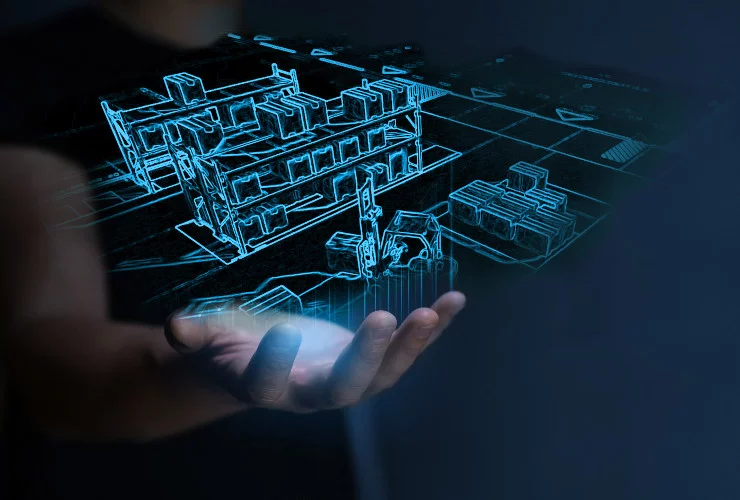Peter MacLeod meets Thomas van Workum, President of FORTNA International, a man who sits the helm of a company that has its finger in just about every piece of supply chain pie. Given the unpredictability inherent in today’s supply chains, a robust, flexible, and reliable fulfillment operation is key to operational success. If it is also cost-effective and carbon-light in operation, then delivering promises to a demanding and expectant customer base becomes less of a challenge and more of an opportunity.
Supply chain optimization
FORTNA is a global partner in supply chain optimization, providing end-to-end solutions that drive operational excellence. From consultancy and system design to automation, software integration, and lifecycle services, the company delivers seamless and scalable solutions tailored to each customer’s needs. As a company with nearly 80 years of history, it has long been one of the recognized leaders in the U.S. and is expanding its footprint in the European market. The upcoming LogiMAT trade show presents an opportunity to showcase its expertise and build new partnerships within the region. Exploring some of these further, I was delighted to be able to interview Thomas van Workum, President FORTNA International, the man who leads the commercial, operations and services supporting its International expansion.
AI for Operational Excellence
While AI continues to be surrounded by hype, FORTNA takes a pragmatic approach—using AI where it truly delivers value. “Our focus is on leveraging AI to create optimal outcomes for our customers,” says Thomas van Workum, President FORTNA International. AI is embedded in three key areas: Tech Support, Software Development and Machine Learning for Automation.
We have developed language models that analyze documentation and historical issue resolution data. This allows tech support teams to identify malfunctions and find solutions much faster, minimizing downtime for customers. “Instead of manually searching through manuals, our AI assistant quickly scans both documentation and past cases, providing a solution in seconds,” van Workum explains.
AI is also transforming how FORTNA develops software for system integration. “We use AI to assist in writing code, which significantly shortens lead times and enables our software engineers to focus on more complex tasks,” he adds. While complex solutions still require manual customization, about 30% of the code is now AI-generated, improving efficiency and accelerating deployment.
FORTNA’s AI-powered robotic solutions use vision technology to pick and place products of all shapes, weights, and sizes. “By leveraging AI and machine learning, our robotic picking solutions achieve top-tier pick rates and accuracy, outperforming many existing solutions in the market,” van Workum notes. With rising labor costs and shrinking availability, businesses are increasingly open to investing in robotics, and FORTNA is at the forefront of delivering these solutions.
Driving Carbon Reduction
Decarbonization is a major challenge in logistics and supply chain management. I asked van Workum in what areas FORTNA is helping its customers reduce their carbon consumption. He answers by identifying two chief ways – designing warehouse automation to use less energy and by optimising packaging to reduce vehicle mileage.

FORTNA designs systems that dynamically adjust energy consumption based on demand. “If the load on a system is lower due to order fluctuations, we don’t need it running at full capacity,” van Workum explains. “By reducing speeds and switching off unnecessary components, we help our customers cut energy usage. With transport, we are working to do it in the most efficient way and therefore we work with partners to supply the best solution to our customers.” Through strategic partnerships with Packsize and Sitma, FORTNA minimizes packaging waste, reducing the amount of air transported in shipments. “Less empty space means fewer trucks on the road, lowering carbon emissions. While eliminating packaging entirely isn’t always feasible, minimizing it makes a real difference,” he adds.
Navigating Supply Chain Uncertainty
In today’s volatile geopolitical and economic climate, businesses must prepare for both the “known unknowns” and the unexpected disruptions that can upend supply chains. So how can FORTNA help its customers become more resistant to the effects of these so-called black swan events?
“Our promise is that FORTNA thinks alongside the customer in how to de-risk their operations and inventory planning. Our consulting team works alongside customers to de-risk their operations and improve inventory planning,” van Workum says. This includes in-depth network analysis to identify potential vulnerabilities and optimal warehouse locations. We do that for some of the largest brands in the world.
At the warehouse level, FORTNA’s automation and software solutions provide an additional layer of resilience. “By integrating robotic picking, customers become less reliant on manual labour, reducing exposure to workforce shortages. Our Warehouse Execution System (WES) is also among the best in the world, continuously optimizing inventory allocation and fulfillment workflows,” he explains.
Looking ahead to LogiMAT, I asked van Workum which of the company’s strengths and specialisms it will be looking to highlight in what is becoming quite a crowded and competitive marketplace.
“We are one of the few system integrators that fully embrace emerging technologies,” he says. Unlike many competitors that focus solely on their own product portfolio, FORTNA prioritizes finding the best solution for each customer’s needs. This commitment to innovation is evident in FORTNA’s collaborations with technology leaders like AutoStore and Geek+, where the company integrates third-party solutions with its own advanced software to provide customers with tailored, high-performance systems.
With a growing presence in Europe and a track record of delivering impactful solutions, FORTNA is set to make a strong impression at LogiMAT—demonstrating how it helps businesses achieve operational excellence in an ever-evolving supply chain landscape.
similar news




